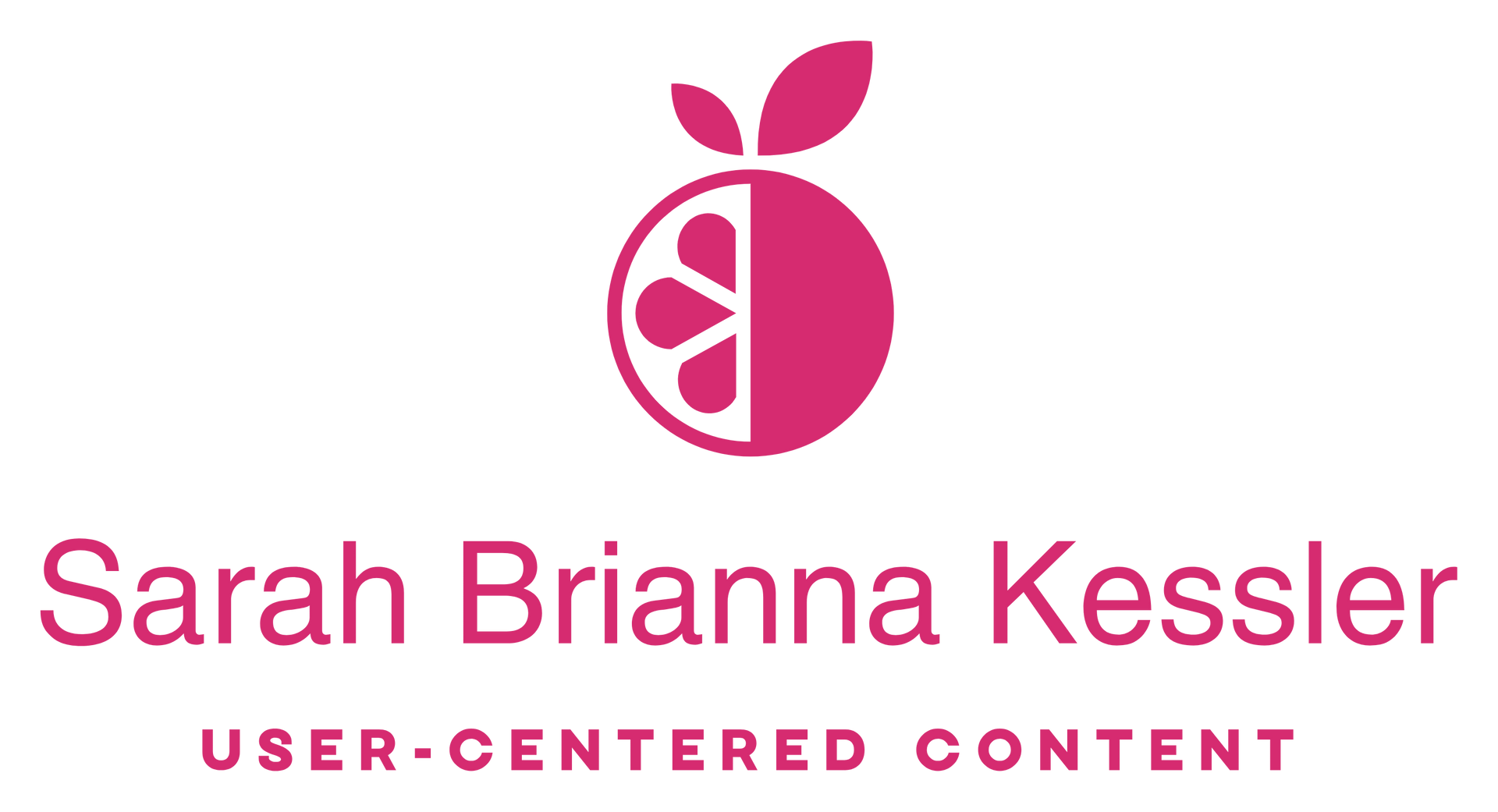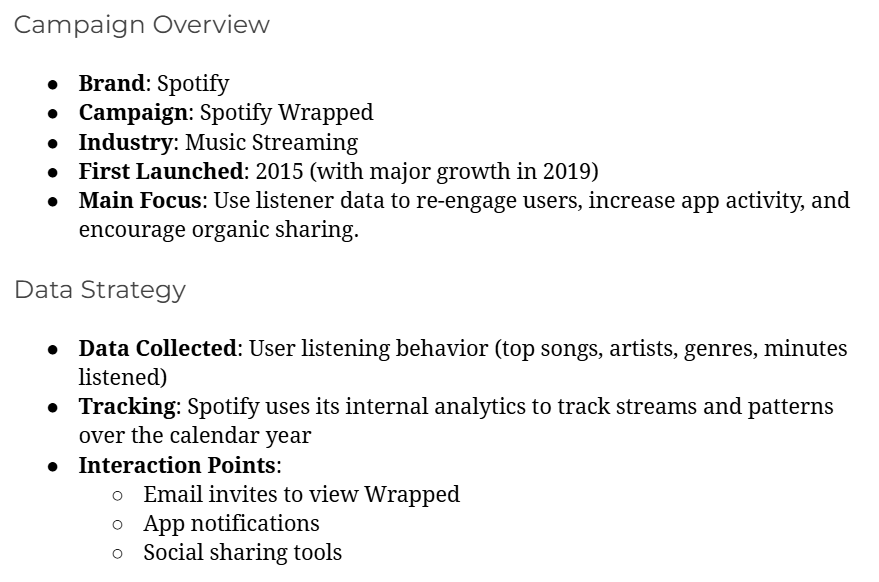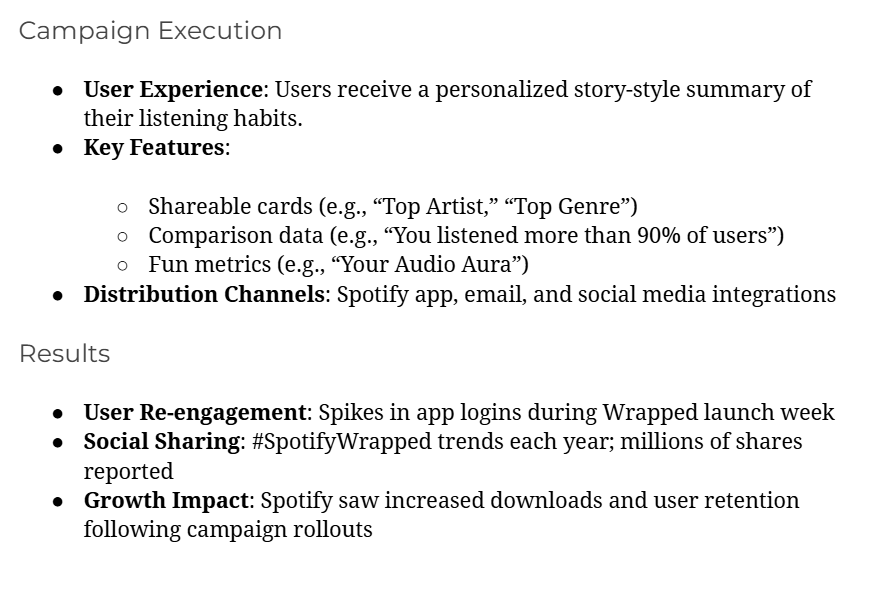Data-Driven Marketing Case Study
Spotify
Image via Spotify
Skills & Competencies
Research and Analysis
Strategic Thinking
Written Communication
Audience Awareness
Critical Evaluation
Business and Marketing Insight
About This Project
This case study explored how Spotify uses data to drive personalized marketing strategies and strengthen audience engagement.
The analysis examined campaign tactics, user segmentation, and brand positioning to understand how data-driven insights translate into measurable business outcomes.
The project combined research, critical evaluation, and written communication to connect marketing theory with practical application.

Context & Purpose
This project analyzed how Spotify uses data to shape its marketing strategies and create personalized user experiences.
The case study focused on how data influences creative decision-making, strengthens audience connection, and reinforces brand storytelling through measurable insights.
Purpose:
- Examine how Spotify integrates user data into marketing and product communication.
- Evaluate how personalization supports engagement and loyalty.
- Identify strategies that balance data analytics with creative expression.
- Assess the ethical and rhetorical implications of data-driven marketing.
Process & Methods
I applied a structured research and analysis process to evaluate Spotify’s use of data in marketing and audience engagement. The focus was on understanding how user insights inform creative decisions and brand communication strategies.
Steps:
- Researched Spotify’s key data-driven campaigns, including Wrapped and Discover Weekly.
- Analyzed how personalization and behavioral data influence campaign design and audience targeting.
- Evaluated the relationship between brand messaging, visual communication, and data storytelling.
- Synthesized findings into a written report connecting data strategy to measurable marketing outcomes.
Findings
The research identified several ways Spotify uses data to connect storytelling, personalization, and brand engagement. These strategies show how analytics can enhance creativity while driving measurable marketing outcomes.
Key Findings:
- Personalized storytelling: Spotify uses listening data to build tailored campaigns like Wrapped that make each user feel recognized.
- Emotional connection through data: Turning user habits into shareable insights fosters pride and community participation.
- Data as design: Visual storytelling and UI elements reinforce brand identity while making analytics feel human and approachable.
- Ethical positioning: Transparency and positive framing encourage users to see data use as collaborative rather than invasive.


Takeaways
The case study concluded with practical takeaways for how brands can adopt data-driven strategies without losing authenticity or creativity.
01
Humanize the Data
Translate analytics into stories that highlight user individuality, making data feel relatable rather than abstract.
02
Prioritize Transparency
Communicate how user data is collected and applied to build trust and long-term loyalty.
03
Align Design and Strategy
Ensure campaign visuals and copy consistently reflect the insights revealed by data, reinforcing a cohesive message.
04
Encourage Participation
Invite users to share and interact with data insights in meaningful ways, turning personal metrics into collective experiences.

Reflection
This project demonstrated how data can shape creative direction when used with purpose and restraint.
Spotify’s campaigns show that personalization is most effective when it strengthens emotional connection, not just precision targeting.
Analyzing these strategies reinforced the value of combining research, narrative thinking, and ethical consideration to create marketing that feels both intelligent and human.





